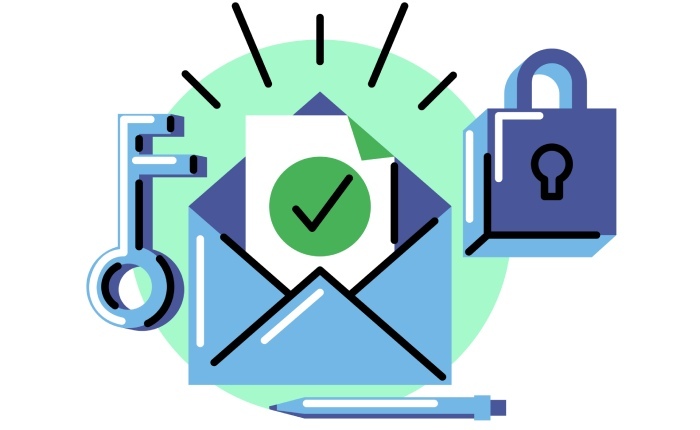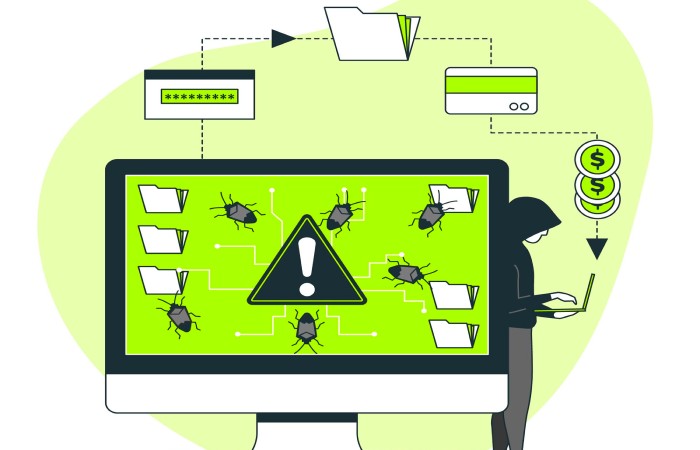Mail Header Analyzer: The Ultimate Tool for Email Security and Spam Detection
In a world where nearly 85% of all emails are classified as spam, the importance of understanding what lies behind your inbox is greater than ever. Have you ever wondered who really sent that unexpected email or if it’s safe to click on an included link? This is where a mail header analyzer comes into play—it’s like having a special magnifying glass for your emails, allowing you to peek beneath the surface and uncover hidden details about each message.
As someone who has navigated the often-treacherous waters of email communication for years, I can tell you that these tools can save you from falling victim to phishing scams and other threats lurking in your inbox. Let’s dive into how mail header analyzers work and why they should become an essential part of your online security toolkit.
A mail header analyzer is a crucial tool that decodes complex email headers into a human-readable format, allowing users to understand important aspects of emails such as sender details, timestamps, and routing information. By using this tool, you can diagnose potential security issues, identify spam or phishing attempts, and gain insight into the authenticity of received emails.
Overview of Mail Header Analyzers
Mail header analyzers are more than just technical tools; they significantly enhance our ability to navigate the sometimes treacherous waters of email communication. Each email is packaged with headers that contain vital information—think of these headers as an email’s fingerprint. They reveal who sent the email, where it originated, and the journey it took through various servers before landing in your inbox. By dissecting this metadata, users can identify potential risks lurking beneath the surface.

The beauty of a mail header analyzer lies in its capacity to simplify complex data. For instance, while you might just see a suspicious email from “YourBank.com,” analyzing the headers could uncover a more convoluted picture—like a vague IP address that points to an unknown server half a world away. This kind of insight puts the power back into your hands, allowing you to make informed decisions instead of guessing about the legitimacy of unexpected emails.
As we explore further, it’s crucial to consider how these tools function in combating the growing trend of phishing attacks and enhancing overall security.
Key Features of Mail Header Analyzers
A primary function of mail header analyzers is to provide diagnostic information that can be pivotal in identifying whether an email has passed various security checks or if it shows signs of being spam. For example, many analyzers include assessments of anti-spam results, letting users know if their incoming messages have been flagged as suspicious due to server discrepancies or unauthorized IP addresses.
Additionally, these tools typically align with established standards such as RFC 822, ensuring a reliable format for interpreting email headers. By adhering to these guidelines, mail header analyzers present accurate depictions of each email’s journey and legitimacy without making assumptions.
When you consider that around 85% of all emails sent are classified as spam, it becomes clear why understanding these tools is more relevant than ever.
Understanding the features is one thing, but knowing where to find these analyzers is another vital step in protecting your email environment.

Popular Mail Header Analyzers
Tools like MXToolbox and Spamcop exemplify the increasing focus on email security. Each offers unique features tailored to different user needs. MXToolbox excels at tracing the source IP address—the starting point for tracking down troublesome emails, while Mail.cf boasts user-friendliness that makes it accessible even for those who aren’t tech-savvy.
| Tool | Key Feature | Website |
| MXToolbox | IP Address Tracing | mxtoolbox.com |
| Mail.cf | Easy-to-Use Interface | mail.cf |
| Spamcop | Advanced Spam Detection | spamcop.net |
| MessageHeader | Comprehensive Header Analysis | messageheader.com |
What sets these tools apart is not just their functionality but their ability to distill complex information into actionable insights. With the threat landscape continually evolving, relying on these analyzers gives you an edge in maintaining robust email security practices.
Embracing this technology enables us to take control over our digital interactions while also understanding essential features that contribute to tracking IP addresses and verifying authenticity.
Key Features for IP Tracking and Authenticity
At the forefront of ensuring the authenticity of email communications is IP tracking. This powerful feature traces the IP address of the sender, showing the email’s journey through various servers. Imagine it as a digital breadcrumb trail that reveals where the email has been before landing in your inbox. By examining this trail, you gain insights into whether that email truly originates from the sender it claims to represent.
A critical step in this process is cross-checking the traced IP against known blacklists. If an IP appears on multiple blacklists, it’s like receiving a red flag warning, indicating a higher likelihood that it might be linked to spam or malicious activity. With every additional flag, your caution meter should rise, guiding your decisions on whether to engage further with the message.

SPF, DKIM, and DMARC
But IP tracking alone isn’t enough when it comes to verifying authenticity; that’s where SPF, DKIM, and DMARC come into play. These three records are akin to a digital signature verification system—ensuring that the email not only comes from a legitimate source but also maintains its integrity throughout its travel.
When an email is sent, an SPF record checks if the server’s IP address is authorized to send emails on behalf of the domain. Think of it as checking identification before granting access to a secured area. If there’s no match, alarms should ring loud and clear.
In contrast, DKIM employs encryption to ensure that the message content has not been altered during transmission. It attaches a digital signature to your emails which gets decrypted by the recipient’s server. You can visualize DKIM as a wax seal on an envelope—you know it’s authentic if the seal remains intact upon delivery.
Finally, DMARC combines both SPF and DKIM in a single umbrella policy, specifying what should happen if either check fails. Just like a thorough security system enforcing strict protocols, DMARC helps prevent fraudulent emails from reaching users’ inboxes.
It’s much like validating your identity at multiple checkpoints; if all signatures align perfectly, you can be confident that the email is legitimate. Meanwhile, any discrepancies warrant further scrutiny, helping you see potential threats before they escalate.
With this foundational knowledge in place, you are well-equipped to take practical steps toward mastering these tools and techniques essential for boosting your email security strategy.
Getting Started with Header Analyzers
Getting started with mail header analyzers isn’t complex at all; in fact, it can be quite intuitive once you understand the layout. Begin by selecting a tool that best aligns with your experience level. For those who are more technically inclined, MXToolbox is an outstanding option that provides a wealth of information. Conversely, if you’re new to this realm, consider user-friendly tools like Mail.cf.

Once you’ve chosen your tool, it’s time to move forward. The next step involves copying headers from the email you wish to scrutinize. To do this, navigate to the specific email in your inbox and look for options labeled ‘Show Original’ or ‘View Source’. This will reveal the metadata associated with your message—essentially putting the inner workings of the email on display for you to investigate.
Remember: The headers contain everything from sender details to timestamps and routing paths, all crucial for understanding the email’s journey.
After obtaining your headers, proceed by pasting them into the analyzer of your choice. Most analyzers provide a dedicated input field where you can easily paste this information. Accurate input ensures that the analysis provides reliable results. Each analyzer has its unique style but generally follows a common structure in processing data.
When you’re ready and excited to unveil the secrets hidden within your email headers, click to run the analysis. Expect a detailed breakdown of the extracted information: IP addresses will be revealed, along with “received” fields that map out the trajectory taken by the email through various servers. You’ll also see authentication results confirming whether or not the email passed SPF, DKIM, or DMARC checks.
Understanding how these elements interact can offer profound insights into potential red flags regarding security threats. That’s where the power of mail header analyzers truly shines; they take potentially complex data and decode it into something comprehensible even for those of us who aren’t tech experts.
Additional Considerations
As you begin to feel comfortable maneuvering through these tools, remember that regular practice enhances your efficiency and intuition with mail header analysis. With rising concerns about spam and phishing attacks, mastering how to use these tools can significantly bolster your email security posture.
Each step you take fortifies your knowledge and equips you with skills that guard against malicious attempts while ensuring legitimate communications flow smoothly in your digital life.
With this foundation set, let’s now shift our focus to practical methods for effectively analyzing those intriguing headers.

Step-by-Step Guide to Analyzing Headers
To make the analysis process more streamlined, here’s a detailed walkthrough. This step-by-step guide will help you understand what to look out for in email headers and how to make sense of all that structured data. By following these steps, you can better safeguard your communication from spam and potential phishing attacks.
Accessing Headers
Let’s begin by accessing the email headers from different email clients. Knowing where to find these headers is essential as it sets the stage for the subsequent analysis.
In Gmail, open the email you want to inspect, click on the three dots menu in the upper right corner, and select ‘Show Original’. This will display the entire header, including valuable diagnostic information.
For Outlook users, open the target email, navigate to ‘File’, and then choose ‘Properties’. You’ll find the relevant information under the ‘Internet headers’ box—simply copy that text for analysis.
If you’re using Thunderbird, just open your email, click ‘More’, then select ‘View Source’ to access the header details.
Each email client has its own method for accessing headers, but once you know where to look, this task becomes second nature.
Analyzing Fields
Once you’ve accessed your headers, it’s time to analyze them systematically. Start with one of the most critical sections: the receiving chain.
- Receiving Chain: In this part of the header, you’ll see a list of ‘Received’ fields. These entries tell you about every server that handled your email before it landed in your inbox. The first one shows where it originated from—the sender’s server—while subsequent lines indicate any relays it passed through. Pay attention to this chain; inconsistencies or strange servers may suggest an untrustworthy source.
- Authentication Results: Here you’ll want to locate information pertaining to SPF (Sender Policy Framework), DKIM (DomainKeys Identified Mail), and DMARC (Domain-based Message Authentication, Reporting & Conformance). These are crucial for verifying an email’s authenticity. If you see “Pass” next to any of these results, it’s generally a positive sign indicating legitimacy.
- IP Address Matching: Check if any IP address listed matches known legitimate server addresses from previous communications with that sender. A mismatch could signify spoofing or a phishing attempt. Use IP lookup tools if needed; they can help verify whether an IP is associated with valid content or security risks.

With headers decoded, we can now turn our attention to techniques that bolster email security further and sharpen your skills in identifying suspicious activities that threaten your digital communications.
Implementing Security Best Practices
Once you’ve grasped the intricacies of header analysis, the proactive steps you take can dramatically bolster your email security. Regular audits should be a cornerstone of your strategy. By frequently reviewing your email server settings, you ensure that essential protocols such as SPF (Sender Policy Framework), DKIM (DomainKeys Identified Mail), and DMARC (Domain-based Message Authentication, Reporting & Conformance) are correctly configured. These protocols serve as the frontline defense against spoofing and phishing attempts. Schedule a monthly review, much like tuning a car for optimal performance—this way, potential weaknesses are spotted before they can be exploited.
As important as these audits are, fostering a culture of employee training is equally crucial.
Regularly educating your staff on identifying suspicious emails and performing basic header analyses should become part of your organization’s routine. Imagine your employees equipped with the knowledge to spot red flags in an email—a sender’s domain that looks slightly off or an unusual request for personal information. Introducing simple guidelines can minimize risks significantly. However, remember that knowledge is only as good as its application; ongoing training is crucial because cyber threats evolve at a rapid pace. Outdated information can leave vulnerabilities exposed just as effectively as ignorance.
“In cybersecurity, the most significant vulnerability often lies with individuals rather than systems.”
Alongside these efforts, creating strong password policies adds another layer of defense. Encourage employees to use unique passwords for different accounts rather than relying on familiar ones across platforms, thus lowering risks associated with credential breaches. Guidance from reputable sources like NIST suggests opting for longer passphrases over complex combinations of characters—this makes it easier to remember without sacrificing security.
Encryption is yet another effective method that cannot be overlooked.

Implementing email encryption safeguards sensitive communications, rendering intercepted messages unreadable to anyone without the proper decryption key. This practice is fundamental in maintaining confidentiality and ensuring that only intended recipients can access email contents. Think of encryption much like sealing a letter in an envelope; it protects the contents during transit and contributes significantly to your organization’s overall email security posture.
| Best Practice | Description |
| Regular Audits | Monthly reviews of server settings for SPF, DKIM, DMARC configuration |
| Employee Training | Ongoing education on recognizing suspicious emails and performing header analysis |
| Strong Password Policies | Encourage unique passwords for each account and use longer passphrases recommended by NIST |
| Email Encryption | Secure sensitive communications through encryption methods |
These strategies not only boost security but also promote a vigilant mindset among employees, preparing them to face new challenges in the digital landscape ahead.
Important Considerations and Limitations
At their core, mail header analyzers serve as powerful allies in the realm of email security, shedding light on how an email has traversed the digital landscape. However, they are not foolproof. While these tools unveil a wealth of information about an email’s journey, they sometimes falter when it comes to recognizing sophisticated spoofing techniques where cybercriminals expertly manipulate header information.
This is where things get tricky. Imagine a savvy attacker crafting an email that appears legitimate on the surface, leveraging details like a trustworthy sender address or familiar domain. This makes it exceedingly difficult for standard analysis tools to catch malice behind the scenes.
A significant aspect to consider is that these analyzers rely heavily on header data, which can be deliberately falsified by experienced attackers posing as authentic sources. The very nature of email allows for this deception; headers can show a flawless SPF (Sender Policy Framework) alignment or DKIM (Domain Keys Identified Mail) signature yet still come from a dubious source if appropriate countermeasures are not implemented.
Implementing regular updates and cross-referencing results with multiple analytical tools can substantially reduce these risks. Think of this combined approach as wearing both a belt and suspenders—double protection enhances your safety net.
Picture a hypothetical scenario: An email passes all initial checks with perfectly aligned SPF and DKIM records but originates from a known malicious IP address that has cleverly masqueraded its true intentions. If you solely depend on header analysis here, you could easily overlook the lurking threat hidden within that seemingly innocuous email. Therefore, it’s clear that using header analysis independently isn’t enough; it must be part of a broader security strategy incorporating additional layers of verification and user awareness.
Even with these limitations in mind, mail header analyzers significantly enhance email security when used effectively as part of a comprehensive strategy. Bridging this understanding leads us to explore how these tools can further elevate our defenses against evolving threats in the ever-changing digital landscape.
Enhancing Email Security with Analyzers
Incorporating mail header analysis into your cybersecurity strategy acts as an essential defense mechanism against evolving email threats. By understanding how a well-crafted email header works and how it contains vital information regarding the sender’s identity, route, and authenticity, you equip yourself with insights that can be crucial in identifying potential security risks. This analysis can transform how you perceive and respond to phishing attacks and other malicious emails.

Multi-Layer Security
When combating these threats, utilizing header analyzers should not exist in a vacuum. Instead, they should synergize with additional security measures like anti-virus software and firewalls, creating a multi-layered defense that enhances overall protection.
Think of each layer as part of a protective fortress around your digital information: while one wall may keep out basic intruders, another safeguards against more sophisticated offensives. Each tool amplifies the effectiveness of the others, making it much harder for cybercriminals to penetrate your defenses.
Imagine a scenario where an email containing malicious links slips through your primary filters. If you’ve implemented a header analyzer in tandem with your anti-virus software, you create a dynamic response capability. The analyzer can reveal suspicious details such as altered sender addresses or unexpected server origins—alerting you to take defensive action before any damage occurs.
Incident Response
Let’s face it: even with robust security measures in place, sometimes malicious emails will evade your defenses. This is when prompt header analysis becomes vital. By dissecting the headers of these suspicious emails quickly, you can trace their origins and gather critical intelligence that aids not only your current defense strategy but also helps update your broader security policies moving forward.
For instance, rather than simply deleting or ignoring a dubious email, analyzing its headers could provide insights into new phishing tactics being employed or reveal previously unnoticed hidden threats. This proactive approach plays an instrumental role in fortifying your defenses against future attacks.

A noteworthy example lies within the experience of a mid-sized company that managed to thwart a sophisticated phishing scam due to vigilant header analysis. Their routine practice of inspecting email headers prompted quick identification of an unusual pattern within incoming emails. Prompt action on this intelligence prevented potential data breaches and secured sensitive client information. This success serves as a compelling reminder that embedding header analysis into regular protocols is more than just a precaution; it’s an essential practice in safeguarding digital assets.
By adopting these effective strategies and integrating them into your daily cybersecurity practices, you dramatically increase your defenses against email-based threats and contribute to establishing a safer digital landscape for everyone involved.
In conclusion, enhancing email security through the use of mail header analyzers not only protects individual users but also fortifies organizations against increasingly sophisticated cyber threats. Taking these steps now paves the way for a safer digital experience in the future.







